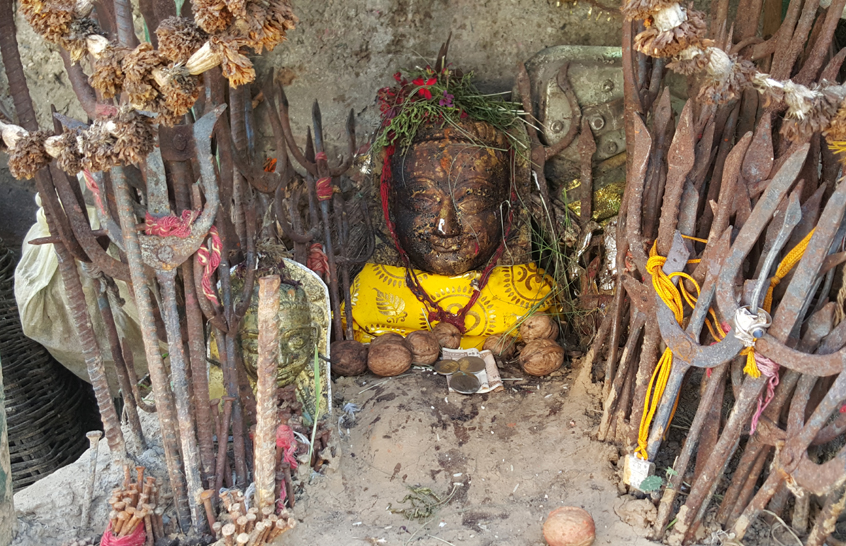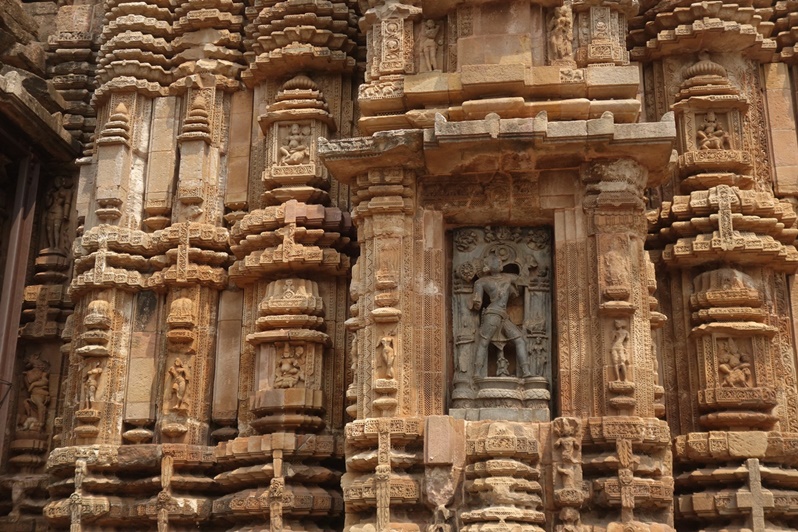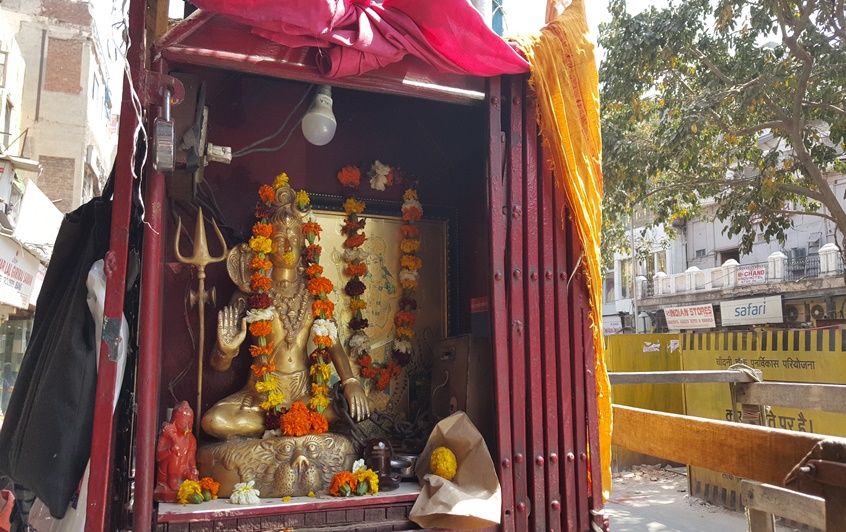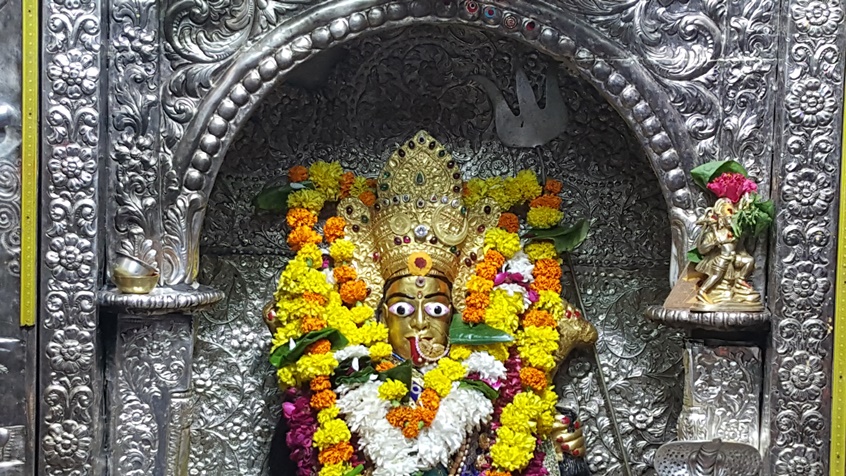
par Bertrand Bellaize, le 12 juin 2020
Art hindou : reconnaître une divinité
Les dieux hindous sont innombrables, il y en aurait plus de 300 millions ! Comment s’y retrouver, comment les reconnaître ?
Bien sur le panthéon indien est foisonnant, cependant la très grande majorité des dieux est peu représentée et les hindous honorent surtout les plus importants.
Au début, il est nécessaire de se familiariser avec les dieux essentiels et leurs différentes formes.
La Trimurti
La pure conscience (le Brahman) est sans forme, lorsqu’elle se manifeste (c’est à dire prend une forme), elle le fait sous trois formes appelées en Inde, la Trimurti : Brahma, le créateur, Vishnou, le garant de l’équilibre (préservateur) et Shiva, le destructeur qui permet la renaissance.
Ces trois divinités sont accompagnées par leur forme féminine qui correspond à leur énergie créatrice (la Shakti), leur pouvoir de réalisation : Brahma par Saraswati, Vishnou par Lakshmi et Shiva par Parvati.
Par ailleurs ces dieux et déesses prennent des formes différentes en fonction des caractéristiques de la manifestation qu’elles expriment : les images et sculptures des différentes formes de Shiva, par exemple, vont posséder les mêmes aspects, ce qui va grandement faciliter leurs identifications.
Dans les images, un des premiers points important à observer est la couleur : la plupart des divinités ont la peau claire, cependant certaines ont une peau avec une couleur propre : Noir pour Kali, bleu pour Krishna, Shiva parfois Vishnou, vert pour Rama, rose pour Brahma, Ganesh est souvent représenté rouge.
Pour une sculpture en métal, en pierre ou en bois, il faut se tourner vers d’autres éléments.
Des formes aisément reconnaissables
Certaines divinités ont une forme aisément reconnaissable dont le plus célèbre est, bien sur, Ganesha, le dieu à la tête d’éléphant. Mais Hanuman, le dieu singe ou Garuda, mi homme-mi aigle, la monture de Vishnou sont aussi très connus. Certaines incarnations (avatars) de Vishnou sont facilement identifiables : Matsya le poisson
Kurma, la tortue, Varaha, le sanglier, Narashima, l’homme lion.
Cependant ce sont les attributs et montures qui vont nous apporter une aide essentielle pour reconnaître une divinité.
Une monture spécifique
Beaucoup de divinités sont accompagnées de montures spécifiques qui facilite grandement leur identification :
Agni : le bélier
Brahma (et Saraswati) : le cygne, l’oie et le paon pour Saraswati
Bhairava : le chien
Durga (parfois Parvati): le lion et le tigre
Ganesha : le rat
Ganga et : le crocodile
Indra : l’éléphant blanc
Kama : le perroquet
Kubera : le cheval blanc ( et Kalki) et surtout la mangouste
Lakshmi : la chouette et la tortue
Niriti : le mulet
Shani : le corbeau et le vautour
Shiva : le taureau blanc
Varuna : le crocodile, le poisson, Makara (animal mythique : mi poisson, mi mammifère)et la tortue
Vayu : l’antilope
Yama : le buffle noir
Des attributs propres à certains dieux
Le plus célèbre est, sans doute, le trident de Shiva qui peut aussi accompagné Parvati ou Ganesh son fils. Shiva peut être aussi deviné grâce au cobra qui l’accompagne systématiquement ainsi que par l’antilope, le croissant de lune et le tambourin qui sont souvent présents à ses cotés ou sur lui. Tandis que la conque et le disque sont les deux symboles essentiels de Vishnou.
Quelques attributs spécifiques :
Le burin : Subrahmaya, une forme de Skanda, le dieu de la Guerre.
Le chasse mouche : Vishnou, Ganga, Ganesha
Le chapelet : Brahma et Saraswati
La cloche : Shiva, Durga, Kali
Le collier de crânes : Durga
Le crochet à éléphant : Ganesh et Skanda
Le feu : Agni, Shiva, Durga, Kali
Le Livre : Brahma, Saraswati et Vishnou
Le Luth : essentiellement Saraswati
Le lotus : Lakshmi, Vishnou et Surya (soleil)
La massue est l’attribut principal de Hanuman (celui de Vishnou aussi)
Le miroir : souvent Parvati
Les plumes de paon : Krishna
D’autres éléments vont être précieux : les vêtements et parures : la jupe de bras pour Kali ou la nudité pour Bhairava. Le trône sur lequel il siège : la peau de tigre sur laquelle Shiva est assis en tant qu‘ascète, Kali sur un cadavre…
Certaines divinités, moins honorées ou plus locales, seront difficilement accessibles. Cependant lorsque que l’on s’intéresse à l’hindouisme, la connaissance des divinités principales se fait assez rapidement et il devient assez aisé de les identifier. Cependant chacun peut être touché, en profondeur, par une statue sans en connaître la signification : cela dépend de chacun, du moment, du lieu...
Une image, une statue d’une divinité hindoue ou provenant d’une autre tradition religieuse nous permet d’entrer en contact quotidien avec le sacré ou tout simplement d’être en présence de la beauté à tout moment de la journée. Le panthéon hindou permet un choix vaste et varié, chacun peut rencontrer son Ishata Devata (sa divinité d ‘élection) !


